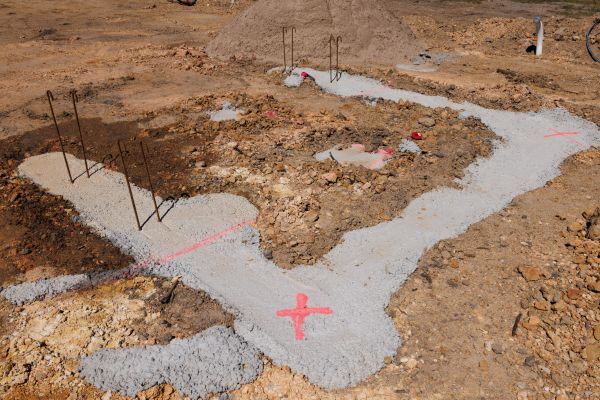Securing a gazebo to the ground is essential for ensuring its stability and longevity. Whether you’re looking to enhance the safety of your outdoor space or protect your investment from unpredictable weather, learning how to secure a gazebo to the ground offers numerous benefits. Properly anchored pavilions are less likely to be damaged by strong winds, providing a safe haven for relaxation and entertainment. This process involves selecting the right anchoring method, understanding your ground type, and using appropriate tools and materials. By securing a pavilion to the ground, you can confidently enjoy your outdoor structure without worrying about it tipping over or getting displaced.
How Do I Secure A Gazebo On A Concrete Patio?
Securing a gazebo on a concrete patio can be done using various methods to ensure stability and safety. One common approach is to use anchor bolts or screws to fasten the pavilion legs directly onto the concrete surface. Ensure that the anchors are securely drilled into the concrete and tightened properly to prevent any movement.
Can I Use Water-Filled Weights For My Gazebo?
Water-filled weights can be a good option for securing your gazebo, especially if you are unable to use traditional methods like anchoring with stakes or concrete blocks. These weights are typically designed to be placed around the base of the pavilion legs to provide stability and prevent it from being lifted by wind or other forces. However, it’s important to ensure that the water-filled weights you choose are heavy enough to effectively hold down your pavilion, especially in windy conditions.
What Are The Best Anchors For Sandy Soil?
In sandy soil, the best anchors to use are typically those that can penetrate deep into the ground and provide strong support. One popular option is screw-in ground anchors, which can be easily twisted into the sand to create a secure hold. These anchors come in various sizes and designs, making them versatile for different applications such as securing tents, umbrellas, or outdoor furniture.
Preparation Before Securing
Before you begin the process of securing a gazebo to the ground, proper preparation is crucial. Start by choosing an ideal location that is level and free of underground utilities or obstructions. Measure the dimensions of your pavilion to ensure a perfect fit in the selected spot. It’s also important to gather all necessary tools and materials, such as a tape measure, level, and appropriate anchors or footings. Understanding your ground type, whether it be soil, concrete, or another surface, will help determine the best method for securing a pavilion to the ground. Thorough preparation not only makes the installation process smoother but also ensures a more stable and durable pavilion.
Securing A Gazebo With Anchors
One of the most common methods to secure a gazebo to the ground is by using anchors. There are various types of anchors available, including ground anchors, rebar anchors, and screw anchors. Ground anchors, for instance, are driven into the soil and attached to the gazebo legs with straps or bolts. Rebar anchors provide a sturdy solution for soft ground, while screw anchors are ideal for sandy or loose soil. When securing a pavilion with anchors, make sure each anchor is properly installed at the base of each pavilion leg, ensuring the structure is firmly held in place. This method provides a reliable way to secure a gazebo to the ground, preventing it from shifting or toppling in strong winds.
Benefits Of Concrete Footings

Using concrete footings is another effective way to secure a gazebo to the ground, offering several significant benefits. Concrete footings provide a solid and permanent foundation, which is especially useful in areas prone to severe weather. They prevent the pavilion from sinking or moving, ensuring long-term stability. Additionally, concrete footings can be customized to fit the exact specifications of your pavilion, making them a versatile option. While the installation process may be more labor-intensive, the durability and strength provided by concrete footings are unparalleled. By securing a pavilion to the ground with concrete footings, you enhance the safety and resilience of your outdoor structure, making it a worthwhile investment.
Utilizing Weights For Stability
Utilizing weights for stability is essential when securing a gazebo to pavers. Not only do weights add extra support and prevent the pavilion from tipping over in windy conditions, but they also ensure that your outdoor structure remains secure and safe for use. One effective way to utilize weights is by using sandbags or concrete blocks specifically designed for this purpose. These heavy objects can be strategically placed around the base of the pavilion to anchor it firmly to the ground.
Proper Installation Techniques
Proper installation techniques are crucial when securing a pavilion to the ground. Start by selecting a level area and marking the exact spots where the pavilion legs will rest. Depending on the surface, different anchoring methods can be used. For soft ground, such as grass or soil, driving stakes or anchors deep into the ground provides strong support. For hard surfaces, using bolts or anchors designed for concrete is recommended. Additionally, cross-bracing the structure can add extra stability. Following these installation steps not only ensures a secure gazebo but also prolongs its lifespan, making it a safe and reliable addition to your outdoor space.
Securing On Different Surfaces

1. Grass And Soil
Begin by selecting heavy-duty ground stakes or anchor kits designed for soft surfaces. Insert the stakes into the ground at each leg of the gazebo, ensuring they are driven deep enough to provide strong resistance against wind and movement. For added security, use rope or straps to tie the pavilion legs to the stakes. This method ensures your pavilion remains stable even in strong winds, allowing you to enjoy a safe and secure outdoor structure.
2. Concrete And Asphalt
Securing a gazebo to the ground on concrete and asphalt surfaces requires a different approach. The most effective method involves using anchor bolts or masonry screws. Start by marking the position of each gazebo leg on the surface. Drill holes into the concrete or asphalt, matching the size of your chosen anchors. Insert the anchor bolts or screws through the gazebo legs into the drilled holes, then tighten them securely. This technique provides a strong hold, preventing the pavilion from shifting or tipping over during adverse weather conditions, and ensures a reliable setup on hard surfaces.
3. Wooden Decks
Securing a gazebo to a wooden deck involves bolting the gazebo directly to the deck boards. First, align the gazebo’s legs with the deck’s support structure to ensure stability. Use lag bolts or carriage bolts, drilling through the base of the gazebo into the wooden deck. Ensure the bolts are long enough to penetrate the deck boards and into the joists below for a secure hold. This method not only secures the pavilion but also integrates it seamlessly with the deck, providing a stable and attractive addition to your outdoor space. Regular inspections and maintenance are crucial to keep the pavilion securely anchored over time.
Weather Considerations
Considering weather conditions is essential when securing a gazebo to the ground. Different weather elements, such as wind, rain, and snow, can impact the stability of your gazebo. In areas prone to strong winds, using heavy-duty anchors or adding extra support with guy ropes can prevent the pavilion from being blown away. For regions with heavy rainfall or snow, ensuring proper drainage around the pavilion and regularly clearing accumulated snow from the roof can prevent structural damage. By taking into account local weather patterns and preparing accordingly, you can maintain a secure and durable pavilion that withstands various environmental challenges.
Ensuring Structural Integrity
To maintain the structural integrity of your gazebo, securing it to the ground properly is essential. This involves using appropriate anchoring systems that match the type of ground you have, whether it’s soil, concrete, or grass. For instance, if your gazebo is on a concrete patio, using masonry anchors can provide a strong hold. For soil or grass, ground stakes or screw anchors are effective options. Ensuring that all joints and connections are tight and secure will also contribute to the stability of the structure. A well-secured gazebo not only withstands external forces but also provides a safe and comfortable space for users.
Using Planters And Decorative Elements
Using planters and decorative elements can offer a practical and aesthetically pleasing way to secure a gazebo to the ground. Heavy planters filled with soil or sand can act as weights to stabilize the gazebo legs. You can position these planters around the perimeter, adding both beauty and functionality to your outdoor space. Decorative elements such as lattice panels or trellises can also be integrated with the gazebo’s framework to enhance stability. By combining these elements, you not only secure the pavilion but also enhance the overall appeal of your garden or patio area.
The Final Thought
Securing your gazebo to the ground is essential to ensure its stability and safety, especially during inclement weather. By following the steps outlined in this article such as using anchoring kits or weights, you can protect your gazebo from being damaged or blown away. Remember to regularly check and maintain the anchoring system to keep your gazebo secure over time. With proper anchoring, you can enjoy peace of mind knowing that your gazebo is firmly in place and ready for all types of outdoor activities. Take action today to properly secure your gazebo and enjoy many more years of use and enjoyment.
